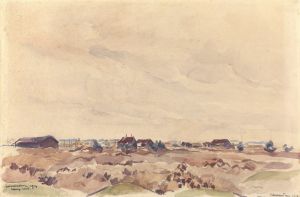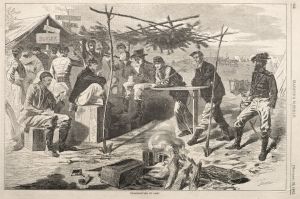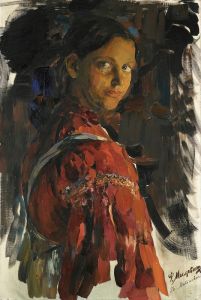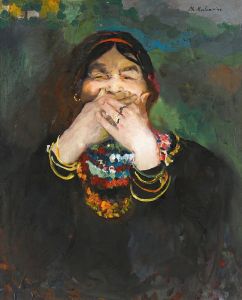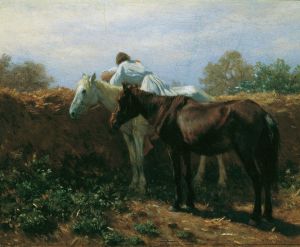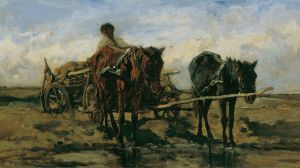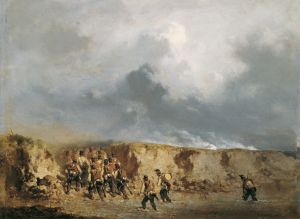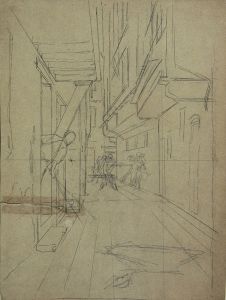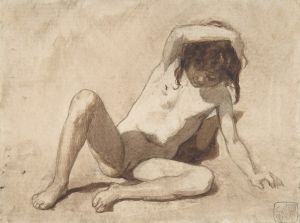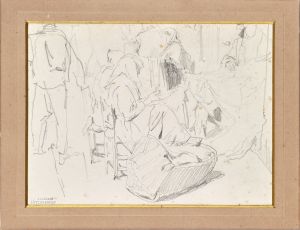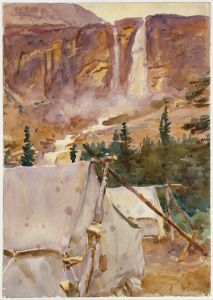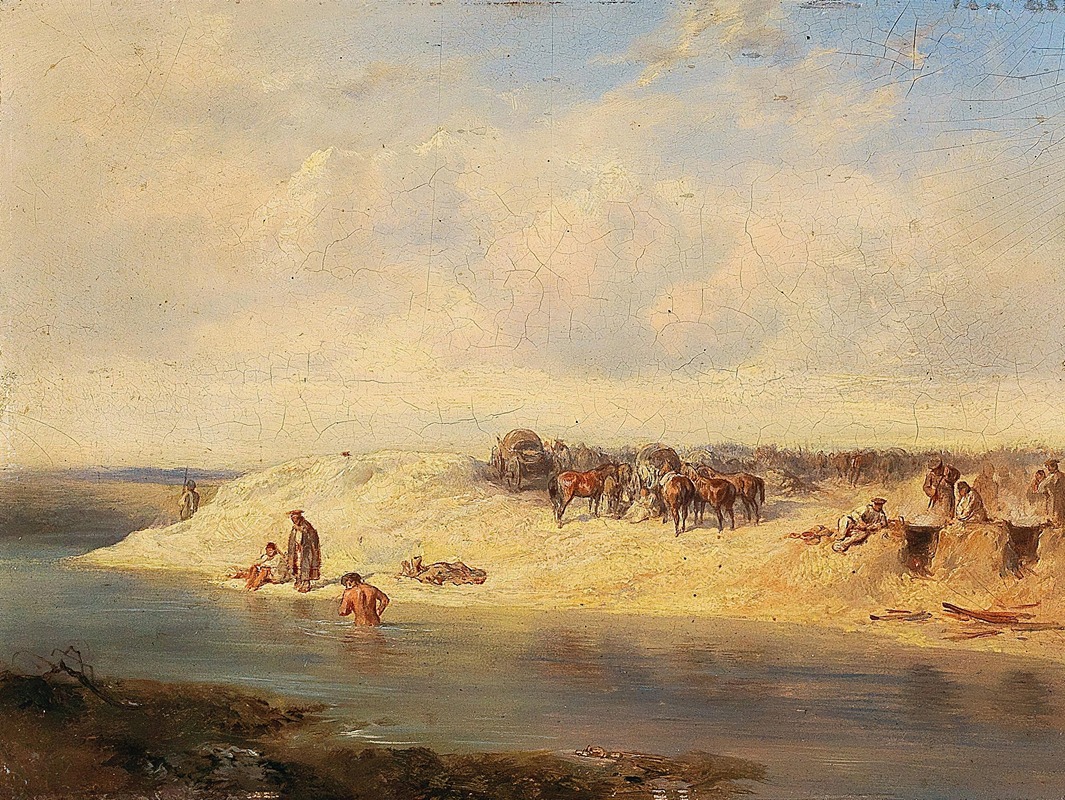
Russisches Bivouak
A hand-painted replica of August von Pettenkofen’s masterpiece Russisches Bivouak, meticulously crafted by professional artists to capture the true essence of the original. Each piece is created with museum-quality canvas and rare mineral pigments, carefully painted by experienced artists with delicate brushstrokes and rich, layered colors to perfectly recreate the texture of the original artwork. Unlike machine-printed reproductions, this hand-painted version brings the painting to life, infused with the artist’s emotions and skill in every stroke. Whether for personal collection or home decoration, it instantly elevates the artistic atmosphere of any space.
"Russisches Bivouak" (Russian Bivouac) is a painting by the Austrian artist August von Pettenkofen, who was born on May 10, 1822, in Vienna and died on March 21, 1889. Pettenkofen is known for his genre scenes and depictions of military life, often drawing inspiration from his experiences and observations during his travels and military service.
The painting "Russisches Bivouak" captures a moment of rest and respite for Russian soldiers, likely during the mid-19th century. Pettenkofen's work often reflects a keen interest in the daily lives and routines of soldiers, and this painting is no exception. The scene is set in an outdoor bivouac, a temporary camp without tents, where soldiers are seen engaging in various activities such as resting, eating, and conversing. The composition of the painting is carefully arranged to convey a sense of camaraderie and the mundane aspects of military life.
Pettenkofen's style is characterized by a realistic approach, with attention to detail and a focus on the human element. His use of light and shadow, as well as his ability to capture the textures of different materials, adds depth and realism to the scene. The artist's palette in "Russisches Bivouak" is typically muted, with earthy tones that enhance the natural setting and the soldiers' uniforms.
August von Pettenkofen's interest in military subjects can be traced back to his own experiences. He served as a volunteer in the Austrian army during the Hungarian Revolution of 1848-1849, which provided him with firsthand exposure to military life. This experience had a lasting impact on his artistic career, influencing many of his works.
"Russisches Bivouak" is part of Pettenkofen's broader body of work that includes numerous depictions of soldiers and military camps. His paintings are valued for their historical accuracy and their ability to convey the human side of military life. Pettenkofen's works are held in various collections, including museums and private collections, and they continue to be appreciated for their artistic and historical significance.
In summary, "Russisches Bivouak" by August von Pettenkofen is a notable example of the artist's focus on military genre scenes. Through his realistic style and attention to detail, Pettenkofen provides a glimpse into the everyday lives of soldiers, capturing moments of rest and interaction in a temporary camp setting. His work remains an important part of 19th-century Austrian art, reflecting both his personal experiences and his artistic skill.







